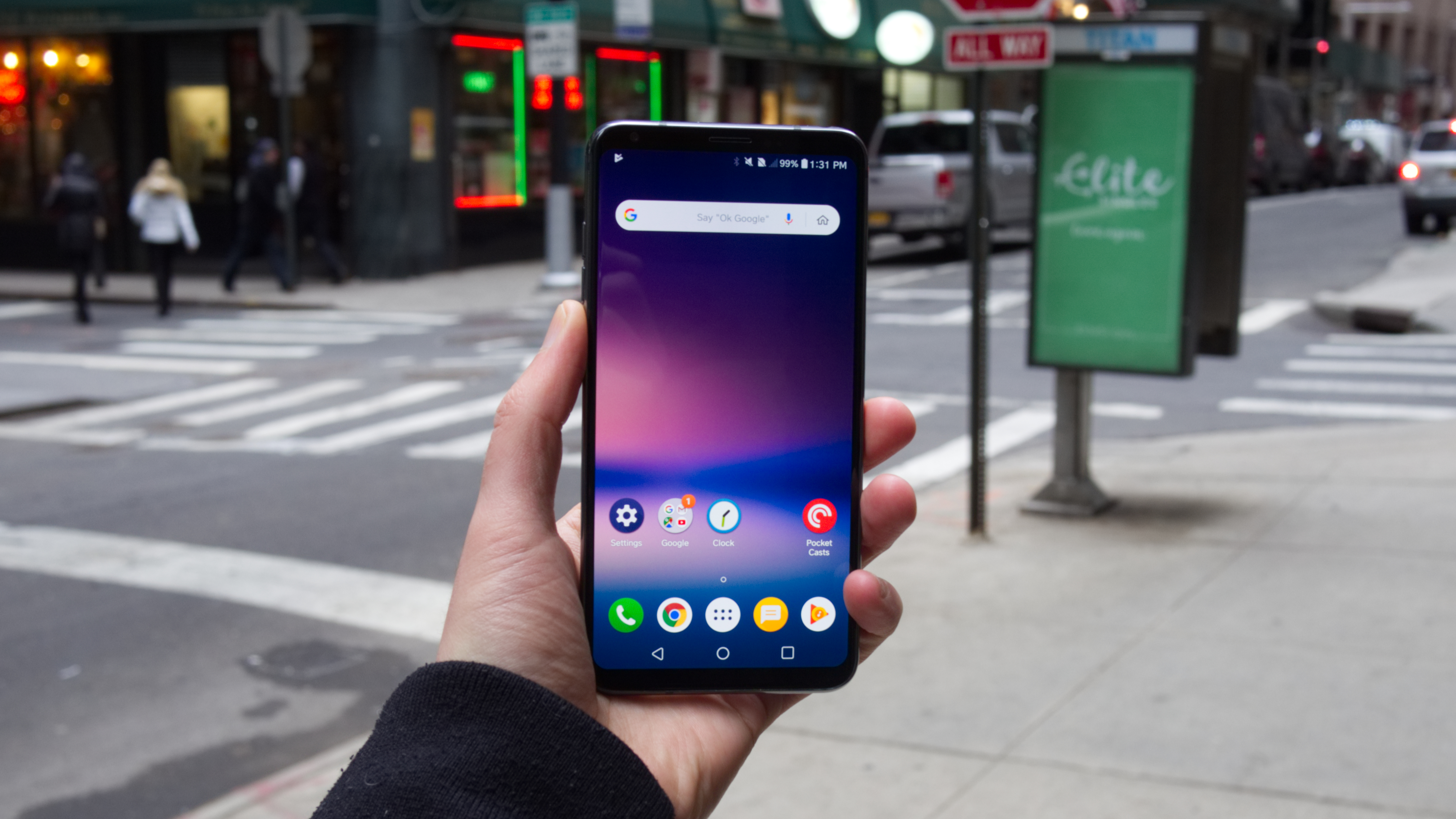Why you can trust TechRadar
The battery is another area where things haven’t changed for the V30S. It features the same non-removable 3,300mAh capacity, only enhanced this time around by the added efficiency brought along in Android Oreo. Google claimed to enhance its Doze mode to be better at optimizing battery life for the times when the phone is with you, not just when it’s set on the night table while you sleep.
All said, we’re looking at similarly satisfactory results coming from LG’s revised phone. It had no problem lasting through the day for us, even pushing through to a second day, depending of course on what we got up to. That said, watching YouTube and playing through games simultaneously on the big six-inch screen causes the battery to plummet.
When it comes to charging the V30S ThinQ from a dead state, we achieved similar results to the V30. In 15 minutes shy of two hours, it was filled completely, though it would have been usable with the charge yielded from just a half hour plugged in.
After putting it through our 90-minute battery drain test, we’re pleased to see that it only dropped to 95% from a full charge. This improves on the 87% charge remaining on the V30 when we tested it in 2017. It’s likely that Android Oreo is helping to boost efficiency here.
As we did with the V30, we malign the shift away from removable batteries. This had been a signature feature in the first two entries, the LG V10 and LG V20, though given its waterproofing, sealing it in is understandable.

Camera
LG’s camera setup has aged well, at least on paper, but we come away from testing the V30S ThinQ feeling the same way with its general performance: disappointed.
That’s a real shame, as this phone comes absolutely loaded with camera features – many of which you can’t find elsewhere. And this doesn’t even include the new AI Cam or QLens features, though truth be told, those don’t really add a whole lot to the experience.
When it comes to software, LG’s camera app is among the best. The user interface, which lets you switch between the 5MP selfie cam and rear-facing duo of 16MP + 13MP lenses with a simple swipe, still feels great. The look of it has been modernized here, too, likely improved alongside the jump up to Android Oreo.
LG V30S ThinQ camera samples






Google Pixel 2 XL samples (for comparison)






If you’re someone who leans heavily on their smartphone to capture memories, you might want to think twice before investing in the V30S ThinQ. Sure, it’s capable of good shots, but smartphone photography has really moved leaps and bounds since the V30 released. You’d be remiss not to consider the Google Pixel 2, Samsung Galaxy S9, iPhone X, or other options in our list of best camera smartphones.

Focusing on what’s new in the V30S ThinQ (all of which has been confirmed to later arrive on the V30), let’s take a look at AI Cam and QLens. Both options sit cozily near the shutter button in the camera app. If you give QLens a tap, the software will look for an item to scan, which it can find a match for on Amazon or Pinterest. It works fairly well in our experience, though your mileage may vary. You can scan QR codes with this function, too.
AI Cam is the more interesting of the two additions, putting the same ol’ tech to work in a new way. When you tap it, the AI begins to ramble off guesses as to what you’re looking at. It’s not for personal affirmation of “yes, I’m looking at a car”, but actually handy because it finds the right color balance and exposure levels depending on what you’re looking at – that is, when it works. It’s the ultimate auto mode, though it sometimes take a few guesses to get the scene just right. And sometimes it just gets things horribly wrong.

One addition that we’re unsure will make it to the V30 is the new Bright Mode found in the camera app. The camera can get a read on the lighting in your environment, and either boost the aperture or reduce it. Both the V30 and V30S ThinQ boast an f/1.6 aperture, though we noticed much better results from the newer device. Who’s to say if the V30 will match it, but chances are good since the hardware is the same.
Current page: Battery life and camera
Prev Page What's it like to use? Next Page Verdict and competitionCameron is a writer at The Verge, focused on reviews, deals coverage, and news. He wrote for magazines and websites such as The Verge, TechRadar, Practical Photoshop, Polygon, Eater and Al Bawaba.

